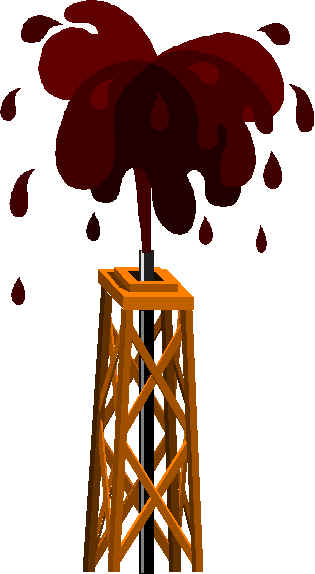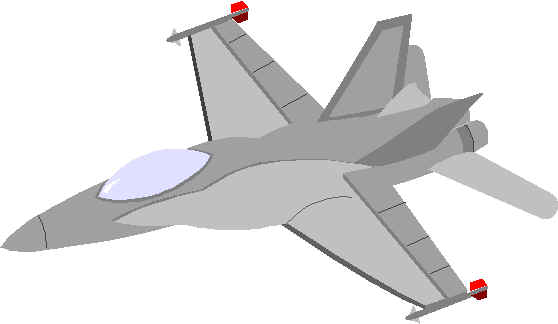Market Failures in the Mojave National Preserve
The Mojave National Preserve was created in October, 1994, by the President’s implementation of the California Desert Protection Act. Located in southern California, the Mojave National Preserve is a vast expanse of desert lands comprised of the Great Basin, Sonoran, and Mojave desert ecosystems. The Preserve encompasses 1.6 million acres, bordered on the north and south by I-15 and I-40, on the east by the Nevada-California border, and located about halfway between Las Vegas and Joshua Tree National Park. The Preserve was established to safeguard the outstanding natural, cultural, and scenic resources of the Mojave desert for both scientific study and scenic enjoyment. However, as with any natural area, examples of market failures abound in the Mojave National Preserve. These stem primarily from a few large corporate and governmental sources as well as urban sprawl. The sources include the Molycorp Inc. Mine company, the Army’s national training center at Fort Irwin and other U.S. Department of Defense facilities.Molycorp Mine Inc. is a large mining facility which began producing lanthanides in the
1950’s and is one of California’s largest producers of
toxic waste. A number of externalities stem from the company’s mining operations and
have deleterious effects on the Preserve’s natural environment and ecosystems. Among
these negative externalities are a series of seven toxic discharges in 1995 and 1996 which
released 350,000 gallons of hazardous waste materials into the Preserve, polluting the
groundwater. The groundwater is the main source for Piute Creek and other springs and
streams within the Preserve’s boundaries. Consequently, the maintenance of this
resource is crucial to ensure the survival of plant and animal life. Moreover, the water
is already being depleted by other uses, which will be discussed later. The hazardous
wastewater dumped into the preserve contained lead in toxic concentrations, radioactive
uranium, barium, thorium, and radium, all above background levels.
California’s largest producers of
toxic waste. A number of externalities stem from the company’s mining operations and
have deleterious effects on the Preserve’s natural environment and ecosystems. Among
these negative externalities are a series of seven toxic discharges in 1995 and 1996 which
released 350,000 gallons of hazardous waste materials into the Preserve, polluting the
groundwater. The groundwater is the main source for Piute Creek and other springs and
streams within the Preserve’s boundaries. Consequently, the maintenance of this
resource is crucial to ensure the survival of plant and animal life. Moreover, the water
is already being depleted by other uses, which will be discussed later. The hazardous
wastewater dumped into the preserve contained lead in toxic concentrations, radioactive
uranium, barium, thorium, and radium, all above background levels.
In addition to
this, the spills occurred in a critical habitat for the threatened desert tortoise. The
waste has resulted in at least two tortoises having been found to contain traces of lead,
56 tortoises being relocated from the incident site, and more than 20,000 feet of tortoise
exclusion fencing being installed. The desert tortoise is listed as a federally and
California state endangered animal. The removal of the released materials is critical to
maintaining the quality of the aquifer and preventing further dispersal by wind. Cleanup
costs related to the hazardous waste spill are expected to reach $7 million by the time
the cleanup is complete.
The second major market failure relates to military
installations which are in close proximity to the
Preserve. The army operations at Fort Irwin fail to take into account noise, air and light
pollution that are produced during their activities. Visibility is a crucial air quality
resource within the Preserve; unfortunately, it is also the most easily obscured by the
military operations. These activities generate dust and sulfur dioxide as well as light
and noise pollution because military aircraft have been known to enter Preserve airspace.
In addition to Fort Irwin, there are four other U.S. Department of Defense facilities near
by that focus on aviation.The aircraft associated with these bases also contrib.ute to the
pollution problem. Further, parts of the Preserve are located within a military operations
area, which permits aircraft to fly at speeds exceeding 250 knots and at altitudes 200
feet above ground level or higher. Sonic booms have caused damage to natural and cultural
resources in addition to adversely affecting tourism. While Fort Irwin is proposing to
expand its installation by 150,000 acres, it is obvious that these facilities detract from
the natural beauty of the Preserve, and disturb the serenity of the vast desert lands.
proximity to the
Preserve. The army operations at Fort Irwin fail to take into account noise, air and light
pollution that are produced during their activities. Visibility is a crucial air quality
resource within the Preserve; unfortunately, it is also the most easily obscured by the
military operations. These activities generate dust and sulfur dioxide as well as light
and noise pollution because military aircraft have been known to enter Preserve airspace.
In addition to Fort Irwin, there are four other U.S. Department of Defense facilities near
by that focus on aviation.The aircraft associated with these bases also contrib.ute to the
pollution problem. Further, parts of the Preserve are located within a military operations
area, which permits aircraft to fly at speeds exceeding 250 knots and at altitudes 200
feet above ground level or higher. Sonic booms have caused damage to natural and cultural
resources in addition to adversely affecting tourism. While Fort Irwin is proposing to
expand its installation by 150,000 acres, it is obvious that these facilities detract from
the natural beauty of the Preserve, and disturb the serenity of the vast desert lands.

The third major market failure is due to the rapidly expanding population of nearby Las Vegas and Southern California. Las Vegas is currently the fastest growing urban area in the nation with approximately 5,000 new residents each month. Along with the rising population comes increased traffic on both I-15 and I-40 (I-15 average daily traffic is between 26,000 and 35,000 vehicles). Also, a new airport has been proposed to be constructed within 10 miles of the Preserve’s boundaries. The results of this development and growth is an increase in noise, air, and light pollution, in addition to decreased ground water supplies, which can have severely detrimental effects in a desert environment where water is already a scarce commodity. In addition to the aforementioned contamination from Molycorp, there is also the problem of ground water depletion since the water is being used to maintain three golf courses as well as supply the mining operations. Water levels in the basin have declined an average of 2 feet per year over the past fifty years.
Population Growth in the Desert Region
| 1850 | 1900 | 1950 | 1996 | |
| Los Angeles | 1,200 | 102,479 | 1,970,358 | 15,747,000 |
| Las Vegas | 30 | 100 | 48,289 | 1,201,073 |
| Pheonix | 50 (in 1868) | 5,554 | 106,818 | 1,159,014 |
| San Diego | 650 | 17,700 | 334,387 | 1,183,102 |
| Tucson | 3,000 | 7,531 | 45,454 | 449,637 |
Estimated Future Population Growth
| 1995 | 2025 | |
| California | 31,589,000 | 49,285,000 |
| Arizona | 4,218,000 | 6,412,000 |
| Nevada | 1,530,000 | 2,312,000 |
Along with these issues, the Preserve faces local pollution issues, consisting
primarily of particulate matter from off-road vehicles, livestock grazing, and agricultural activities. These
behaviors have left certain areas of the preserve denuded or sparsely vegetated, allowing
wind erosion to occur and air quality to suffer and occasionally causing violations of
particulate standards at many locations. These failures are a result of the resources
being open access since they are nonexcludable but rival. Each individual has an incentive
to overuse the resource because the price does not reflect the social marginal cost of the
good.
agricultural activities. These
behaviors have left certain areas of the preserve denuded or sparsely vegetated, allowing
wind erosion to occur and air quality to suffer and occasionally causing violations of
particulate standards at many locations. These failures are a result of the resources
being open access since they are nonexcludable but rival. Each individual has an incentive
to overuse the resource because the price does not reflect the social marginal cost of the
good.